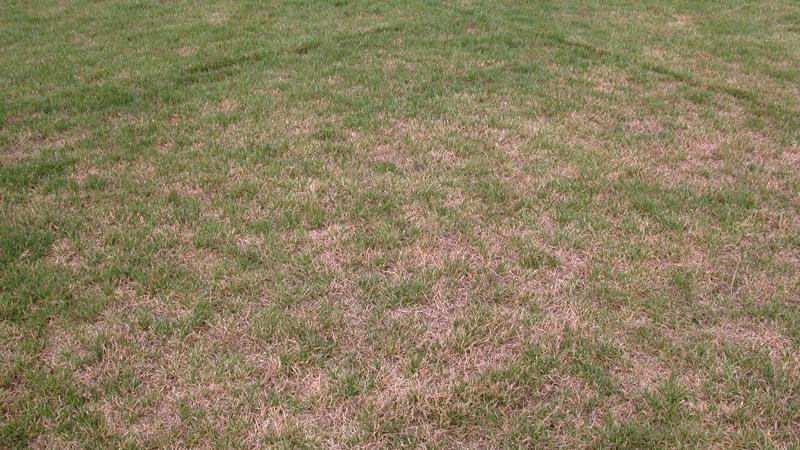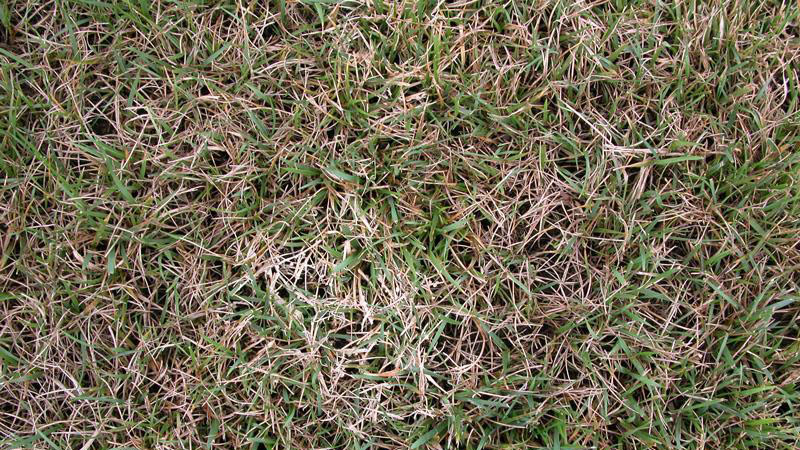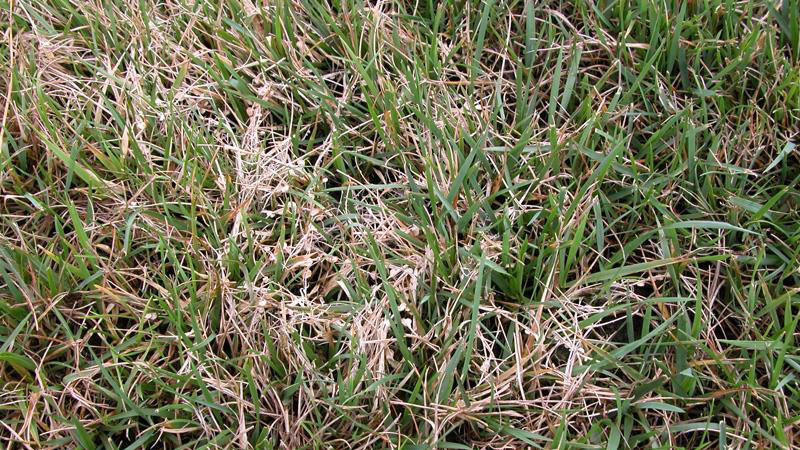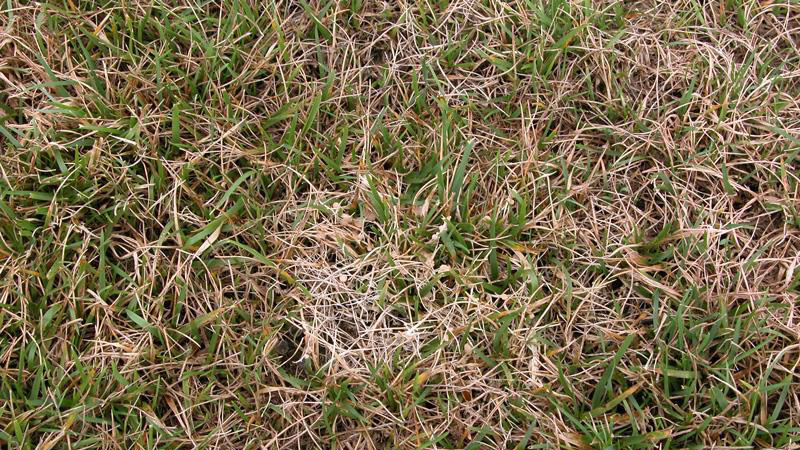Symptoms
White patch, also known as white blight, is primarily a disease of tall fescue in transition zone areas. The disease develops during periods of hot, humid weather and is most damaging to new plantings in the first year or two after establishment. Symptoms appear in white circles or patches up to 1 foot in diameter, and small white or tan mushrooms (about 1⁄4 inch in diameter) are produced directly on the blighted leaves. White patch is most damaging in tall fescue that is under-irrigated or deficient in nitrogen or other essential nutrients.
Development Factors
The white patch pathogen is most active during the summer when humidity is high and night temperatures are above 70°F. Stands of tall fescue that are under-fertilized, under-irrigated, heavily trafficked, or under other forms of stress are most prone to this disease.
Cultural Control
Apply 3 to 4 lbs. N per 1000 square feet to tall fescue landscapes annually to maintain optimal growth and density. Approximately 2⁄3 of this nitrogen should be applied in the fall, with the remainder applied in the spring prior to May 1. Perform an annual soil test to ensure that soil pH and nutrient levels are optimal. Mow tall fescue regularly to a height of 3 to 3.5 inches. Use deep and infrequent irrigation to prevent drought stress and minimize leaf wetness periods. This is done by irrigating for a sufficient period of time to wet the entire root zone, then re-applying only when the root zone has become dry and the turf begins to show signs of mild drought stress.
Chemical Control
Infestations of white patch are rarely severe enough to warrant fungicide applications. No fungicides are labeled for control of white patch, but azoxystrobin (Heritage) and flutolanil (ProStar or Pedigree) have shown some activity against the disease.
Species Data
- HOST SPECIES
- tall fescue
- MONTHS WITH SYMPTOMS
- May to September
- STAND SYMPTOMS
- FOLIAR SYMPTOMS LOCATION / SHAPE
- blighting of entire leaves
- FOLIAR SYMPTOMS COLOR
- white
- ROOT / CROWN SYMPTOMS
- none
- FUNGAL SIGNS
- mushrooms
Publication date: Nov. 10, 2017
Reviewed/Revised: Dec. 16, 2019
Recommendations for the use of agricultural chemicals are included in this publication as a convenience to the reader. The use of brand names and any mention or listing of commercial products or services in this publication does not imply endorsement by NC State University or N.C. A&T State University nor discrimination against similar products or services not mentioned. Individuals who use agricultural chemicals are responsible for ensuring that the intended use complies with current regulations and conforms to the product label. Be sure to obtain current information about usage regulations and examine a current product label before applying any chemical. For assistance, contact your local N.C. Cooperative Extension county center.
N.C. Cooperative Extension prohibits discrimination and harassment regardless of age, color, disability, family and marital status, gender identity, national origin, political beliefs, race, religion, sex (including pregnancy), sexual orientation and veteran status.






